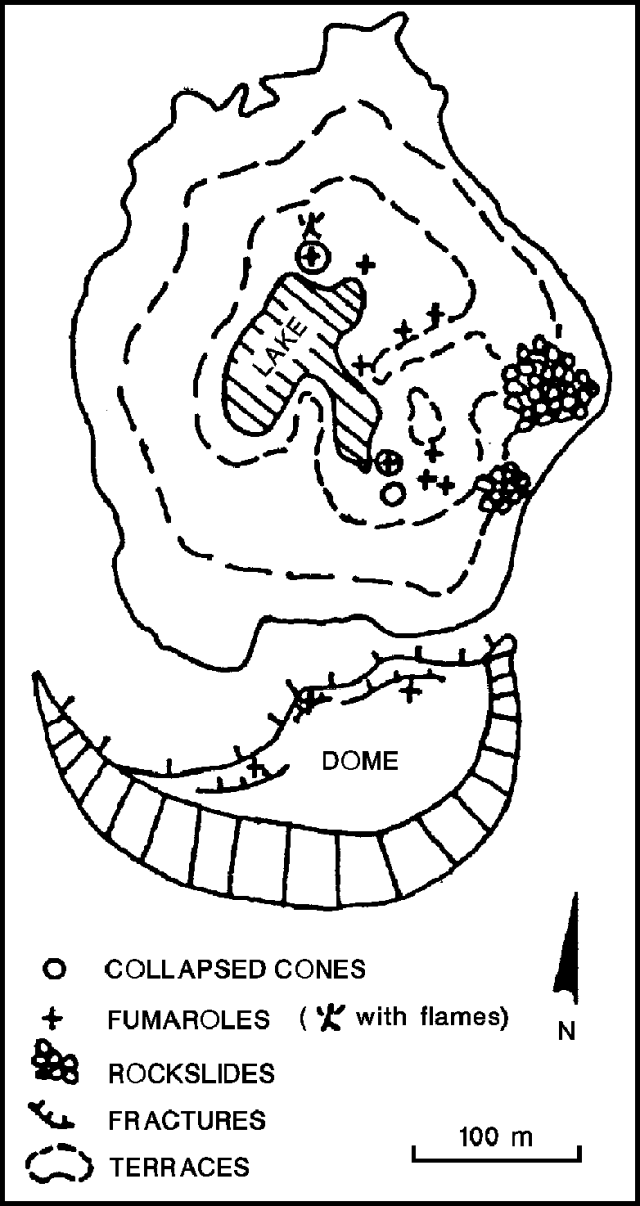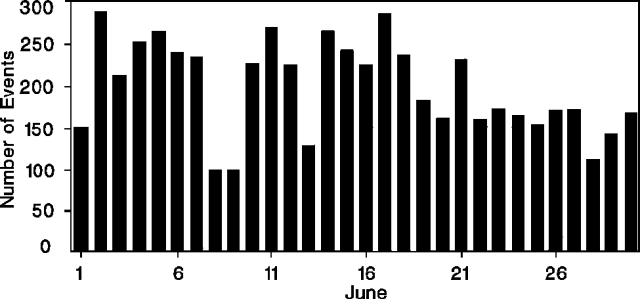Report on Poas (Costa Rica) — June 1992
Bulletin of the Global Volcanism Network, vol. 17, no. 6 (June 1992)
Managing Editor: Lindsay McClelland.
Poas (Costa Rica) Vigorous gas emission in and around crater lake; continued seismicity
Please cite this report as:
Global Volcanism Program, 1992. Report on Poas (Costa Rica) (McClelland, L., ed.). Bulletin of the Global Volcanism Network, 17:6. Smithsonian Institution. https://doi.org/10.5479/si.GVP.BGVN199206-345040
Poas
Costa Rica
10.2°N, 84.233°W; summit elev. 2697 m
All times are local (unless otherwise noted)
Water level in the crater lake had dropped at least 3 m since April, shrinking it substantially by early June (figure 41). Its color was lime green to sky blue, and the temperature in accessible areas reached 85.8°C. Numerous cones and miniature mud volcanoes were visible within the lake. The nine main fumaroles emitted water vapor with yellowish and bluish gases (sulfur and SO2). Bluish gases and orange flames, probably caused by combustion of sulfur, emerged from the northernmost fumarole. The fumaroles to the SE occurred among collapsed sulfur-and-mud cones, as in the past 3 years.
 |
Figure 41. Sketch map of the crater at Poás, 10 June 1992. Courtesy of the Instituto Costarricense de Electricidad. |
As the rainy season began, fumaroles exposed by the shrinkage of the crater lake were covered by water. The resulting continuous phreatic activity produced plumes 1-2 m high. As the lake rose, it cooled to 64-73°C, with a pH of 1.1. Weak fumarolic activity continued on the 1953-55 dome, with a maximum measured temperature of 89°C and a condensate pH of 4.4.
A daily average of 200 low-frequency events and 24 A-B-type (medium-frequency) events were recorded 2.7 km SW of the summit (by station POA2) in June (figure 42). Highest seismicity was on 2 June.
 |
Figure 42. Daily number of seismic events recorded at a station (POA2) 2.7 km SW of the summit of Poás, June 1992. Courtesy of the Univ Nacional. |
Geological Summary. The broad vegetated edifice of Poás, one of the most active volcanoes of Costa Rica, contains three craters along a N-S line. The frequently visited multi-hued summit crater lakes of the basaltic-to-dacitic volcano are easily accessible by vehicle from the nearby capital city of San José. A N-S-trending fissure cutting the complex stratovolcano extends to the lower N flank, where it has produced the Congo stratovolcano and several lake-filled maars. The southernmost of the two summit crater lakes, Botos, last erupted about 7,500 years ago. The more prominent geothermally heated northern lake, Laguna Caliente, is one of the world's most acidic natural lakes, with a pH of near zero. It has been the site of frequent phreatic and phreatomagmatic eruptions since an eruption was reported in 1828. Eruptions often include geyser-like ejections of crater-lake water.
Information Contacts: E. Fernández, J. Barquero, and V. Barboza, OVSCIORI; G. Soto, ICE; M. Fernández, UCR.

